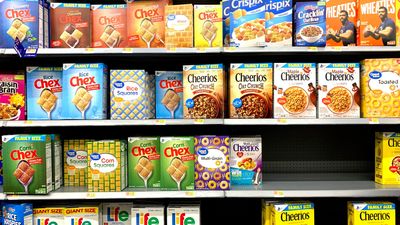Photo by Franki Chamaki on Unsplash
Article originally appeared on Forbes.
My company recently produced a report on the state of the food retail industry, and in studying that sector, we discovered something that we hope will make food retailers stand up and listen. We learned that the nation's top grocery chains have found a way to focus on both short-term financial performance and investment in long-term consumer engagement. The latter is considered an insurance policy for the future — a sobering thought in the new year.
Insurance for the future may be one of the most difficult things to buy if you are overly concerned about present-day financial performance. As a consultant and provider of technology services to food retailers all over the world, I understand why they are concerned. Despite positive projections for the industry in 2019, there are signs that the economy is slowing, and that could very well soften consumer spending.
There's also the continuing threat from digital disruptors like Amazon that might coerce retailers into taking actions, such as blindly lowering prices, that further erode margins that are already razor thin. Another threat, well known to the industry but perhaps less so to the general public, is the new generation of discount chains that have figured out the magic of balancing short and long-term strategy and planning.
But here's the biggest challenge facing food retailers: falling prey to fear itself. I'll admit that fear can sometimes be a helpful motivator to monitor and manage your business. A recent article reported the one photo that the CEO of Walmart keeps on his phone. It lists the top 10 retailers per decade over more than sixty years, and it serves as a reminder for how many companies come and go. But McMillon is managing fear, not falling prey to it. Retailers can manage their fear, rather than fall prey to it, by leaning on three tools that can alter their standing in the industry.
Data
Recent years have brought with them the dawning realization that retailers possess abundant consumer data. Gathered and culled from direct interactions between stores and their customers, data of this quality helps retailers price and promote their products more intelligently. It helps them with product assortment, store design and managing the new kinds of services they offer. This can include things like in-store pickup and options for self-service, depending on what makes sense for their customers. More profoundly, data can help retailers think about how they can monetize that data to help their vendors connect more meaningfully with customers. The reality is that all grocery retailers potentially are media companies, with access to online and offline media properties. It's a lesson learned from Amazon, but a small number of retailers around the world are helping to raise their profit margins by taking a page from the playbook. The place to start is with first-party customer data, which is what retailers uniquely possess.
Relationships
For food retailers especially, we learned that there is an enormous number of inefficiencies with how food retailers engage with vendors, beginning with how they collaborate on pricing and promotions. Some retailers are struggling to move beyond spreadsheets to other systems that help automate exceedingly detailed work. We are living in a time where inefficiencies can make or break a business. But still, many food retailers are ready to concede that times have changed. Beyond providing technology that moves beyond spreadsheets, retailers would benefit from interviewing their vendors to discover what would make life easier for them in this highly competitive industry.
Strategy
Change may be painful, but inertia will be lethal.
As the celebrated business scholar Clay Christensen has written, it is very difficult for any business to change course on a strategy that had made it successful in the past. He calls this the innovator's dilemma because, at almost any time in the evolution of any industry, leaders must understand that a decision regarding the future must be made.
To that end, the future is not served by signing a partnership with a third-party fulfillment provider to launch an e-commerce service. It's about making better decisions that impact the core of your business and operating more efficiently to better serve your customers across all of your channels.
But here's where food retailers have a unique opportunity, at the beginning of 2019, to ignore fear and take a small leap into becoming more viable by making decisions based on what they know about their customers. There is no business that knows more about people than retail, because they actually meet and greet them every day.
Take heart, and fear not. This is only the beginning of a story that's mostly yet untold.
